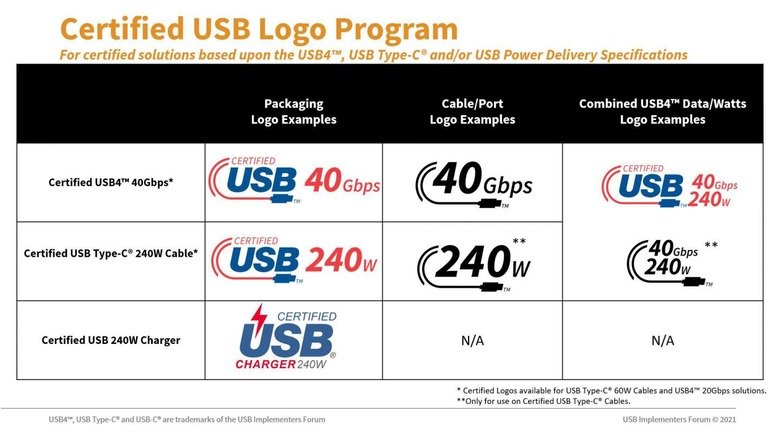This Fix For Confusing USB-C Power Cables Pulls Another Issue Into The Spotlight
For a connector that was meant to rescue us from cable hell, USB-C has turned out to be unexpectedly frustrating in many ways. While in theory the interchangeable port should enable combinations of high-speed data, power, and external displays, uncertainties about just which cables will satisfy which purpose have undermined that flexibility. Now, the USB-IF is aiming to address at least USB Type-C power cables.
One of the big advantages of USB-C is that it supports higher wattage power supplies. It's fairly common, now, for laptops to use USB-C for their power connection, rather than some sort of proprietary barrel plug. However for it to be truly useful, you need to make sure the cable you're connecting is actually capable of supporting the level of power your device requires – and not all of them do.
A new Certified USB Logo Program from the USB Implementers Forum (USB-IF) – the organization which promotes USB and USB standards – is hoping to clear up the power cable uncertainty. It doesn't change the power level support as defined in the recent USB Power Delivery (USB PD) 3.1 Specification, but instead focuses on how those cables will be labeled.
USB PD 3.1 supports 60W or 240W of power over a USB Type-C cable and connector. That's up from the previous 100W maximum, and paves the way for even more power-hungry devices – such as external GPUs – being connected with a single USB-C cable.

What it means is that, as you go shopping for cables, you'll start to see packaging that shows USB4 logos with the product's capability in watts. Of course, just because the cable supports that, it doesn't mean your device will necessarily charge any faster. You'll also need a power supply that's compatible, and your device will need to be able to negotiate those higher rates too.
On top of that, just because a USB-C cable supports the maximum power rate, doesn't mean it'll also necessarily support the fastest data rate.
The USB PD 3.1 specification is actually more complex for power delivery purposes than you might expect. There's now a choice of three new, fixed voltages – 28V (above 100W), 36V (above 140W) and 48V (above 180W) – which join the exiting 5V, 9V, 15V, and 20V fixed voltages. Meanwhile, a new adjustable voltage mode allows for supplies that range from 15V through to either 28V, 36V, or 48V depending on available power.
In addition to the increased headroom for power supply, the standard also introduces more stringent safety requirements for those 100-240W power levels.
Meanwhile, adoption of USB-C isn't quite as universally popular as you might hope it would be. Apple is currently pushing back against new European regulations that would mandate USB-C as the power connector for consumer devices, a move which would force it to abandon its homegrown Lightning port.
